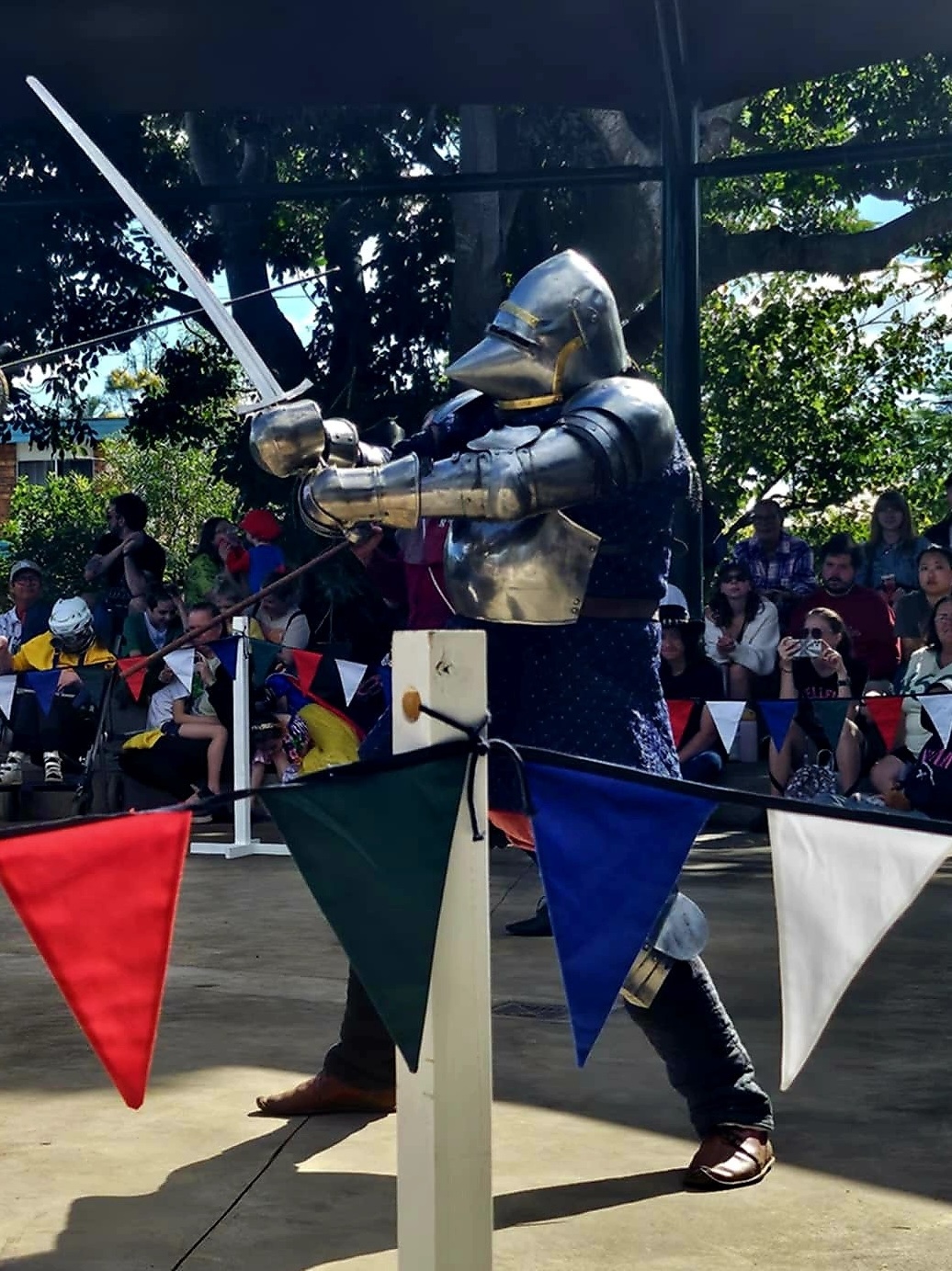Stephanus Attebregge
Veteran Man-at-Arms (1372 - Present)

Basic Information
Full Name: Stephanus Attebregge (or 'Stephen')
Birth Year: 1372
Birthplace: Bermondsey, Surrey (South London)
Current Year (Persona): 1416
Current Age: 44
Social Standing: Commoner, Veteran Man-at-Arms
Timeline & Background
c. 1372 - 1390 (Childhood & Youth)
Born and raised in Bermondsey into a family of fish smokers. They processed fish brought in via the Thames, preparing it for sale or preservation. They traded their goods at nearby Borough Market or across the river at the larger Billingsgate Fish Market. The byname 'Attebregge' suggests his family's historic and current proximity to London Bridge.
c. 1390 - 1394 (Leaving Home & City Watch - Age 18-22)
Found service in the London City Watch, specifically serving within Bridge Ward Within.
c. 1394 - 1414 (Early Military Career - Age 22 onwards)
Joined King Richard II's expeditionary force to Ireland, serving under Roger Mortimer, Earl of March.
Served in the Calais Garrison under Sir Thomas Rempston.
Participated in campaigns during Owain Glyndŵr's rebellion, particularly around Monmouthshire.
1415 (The Agincourt Campaign - Age 43)
Joined King Henry V's army for the campaign in France, serving under Edward, Duke of York.
Participated in the Siege of Harfleur and the Battle of Agincourt.
1416 (Present Day - Age 44)
Returned to England as an Agincourt veteran, seeking service with Sir Godwin Black as a senior retainer and veteran Man-at-Arms.
Detailed Narrative
Childhood & Youth (c. 1372 - 1390)
Born and raised in Bermondsey into a family of fish smokers. They processed fish brought in via the Thames, preparing it for sale or preservation. They traded their goods at nearby Borough Market or across the river at the larger Billingsgate Fish Market. The byname 'Attebregge' suggests his family's historic and current proximity to London Bridge.
Grew up accustomed to the physical labour and distinct smells of the fish trade, as well as the bustling, sometimes rough, environment near the southern end of London Bridge. Received minimal formal education; learned practical skills and the ways of the working class near the capital.
Leaving Home & City Watch (c. 1390 - 1394)
Seeking opportunity or a different path, Stephanus left his family. He found service in the London City Watch for a few years, specifically serving his duty within Bridge Ward Within. This provided discipline, basic arms training (with a bill and staff), and experience navigating the complexities of the city under the authority of the Aldermen, Sheriffs, and ultimately the Lord Mayor.
Early Military Career (c. 1394 - 1414)
In 1394, widespread recruitment began for King Richard II's large expeditionary force to Ireland. Stephanus joined the army, signing on with the large retinue of Roger Mortimer, Earl of March, the King's Lieutenant in Ireland. His initial role was as a billman. He gained his first taste of formal military campaigning during the 1394-95 Irish expedition under Mortimer.
Following his return, from roughly 1396 to early 1399, he found service in the Calais Garrison, serving under an experienced knight, Sir Thomas Rempston. In 1399, he was recalled from Calais to join Richard II's second expedition to Ireland, this time serving in the retinue of John Montacute, Earl of Salisbury, a loyal supporter of the King. This meant he was out of the country during Henry Bolingbroke's usurpation.
Upon returning to England in late 1399 or early 1400, Stephanus found Henry IV on the throne and that his recent captain, the Earl of Salisbury, had been captured and executed for remaining loyal to Richard II. This left Stephanus abruptly unemployed and needing to demonstrate his willingness to serve the new Lancastrian regime.
Fortunately, Owain Glyndŵr's rebellion ignited in Wales in 1400, creating an immediate demand for experienced soldiers. Stephanus quickly found new service in forces heading to the Welsh Marches. He spent significant time over the next decade campaigning there, particularly around Monmouthshire, serving in forces associated with Prince Henry's campaigns, and under the direct command of local loyalist captains like Sir William ap Thomas operating within the Prince's command structure. He participated in garrison duty, patrols, actions aimed at relieving besieged castles (like Usk or Grosmont), and was part of the forces involved in the Battle of Pwll Melyn in 1405.
Through this continued service under Henry IV and then Henry V, he progressed fully to the status of a Man-at-Arms, acquiring better armour and proficiency with sword and dagger alongside his polearm skills. Functioned as a reliable retainer or hired soldier, not a traditional young squire.
The Agincourt Campaign (1415)
As a veteran Man-at-Arms, he joined King Henry V's army for the campaign in France, serving in the substantial retinue of Edward, Duke of York. Endured the Siege of Harfleur and the subsequent arduous march.
At the Battle of Agincourt (October 25th): Fought dismounted in the main battle (centre division) under the command of the Duke of York (who died in the fighting). Stood shoulder-to-shoulder with knights and other men-at-arms, facing French charges. Witnessed the devastating effect of English archery and participated in the brutal melee. Survived through skill, endurance, and perhaps the fortune of battle.
Present Day (1416)
Returned to England, bearing the distinction of an Agincourt veteran who had served under notable commanders. His experience and reputation have led him to seek service with Sir Godwin Black. While not a young squire, he could serve as a senior retainer and veteran Man-at-Arms within Sir Godwin's company. He brings decades of practical military experience to his new role, hoping his loyal service and continued prowess will be recognised by Sir Godwin, potentially leading to elevation as a Knight Bachelor.